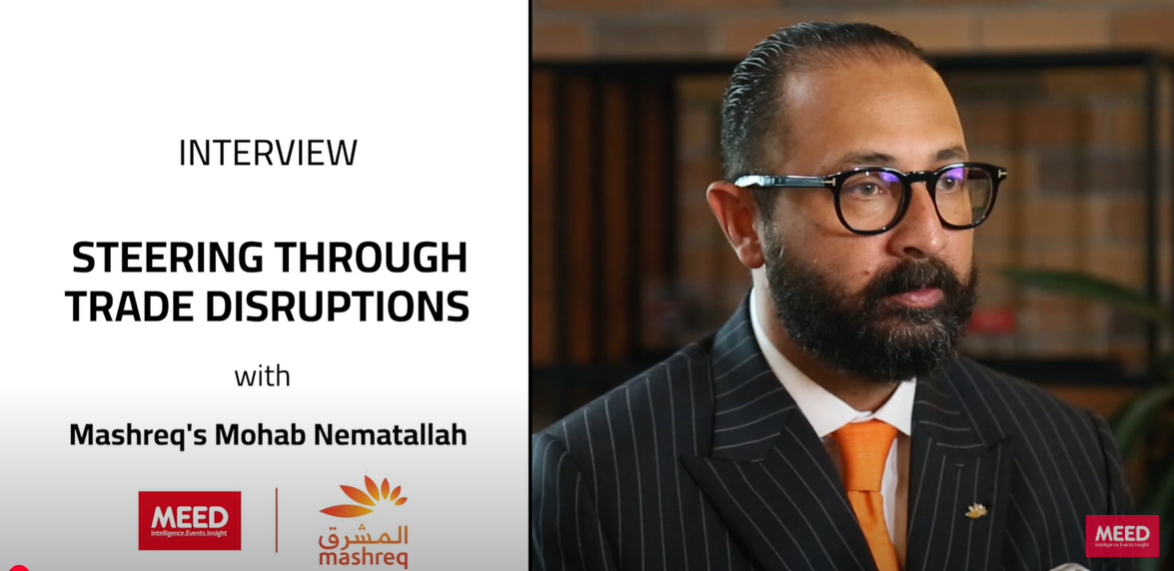Watch: Steering through trade disruptions
Senior Vice President & Head of Public Sector at Mashreq, Mohab Nematallah, comments on how GCC economies are better positioned to navigate the impact of tariffs in a volatile global environment
The announcement of US tariffs in April sent shockwaves through global markets.
Trade-dependent economies scrambled to assess the impact on their exports and supply chains.
But across the Gulf, the response has been more muted, with governments viewing the disruption not as a threat, but as a test of their long-term economic planning and resilience.
Primarily, this is due to their trade deficits with the US, which have resulted in them being subject to the lowest 10% baseline tariff.
In 2024, just 3.7% of the region’s total exports were US-bound, with hydrocarbons – still the GCC’s largest export category – exempt from the new tariff regime. The UAE, for example, exported only $7bn-$7.2bn-worth of goods to the US out of a GDP exceeding $500bn. As a result, direct fiscal risks from trade friction have been minimal.
This buffer has allowed governments to focus on long-term economic changes instead of reacting to short-term fluctuations.
“The GCC by design enjoys a relatively lower tariff environment. These largely depend on how much of a state’s production is exported to the US. For some in the region, it’s just 1.3% of GDP, so the impact is substantially diluted.”
Mohab Nematallah, senior vice president & head of public sector at Mashreq Bank



